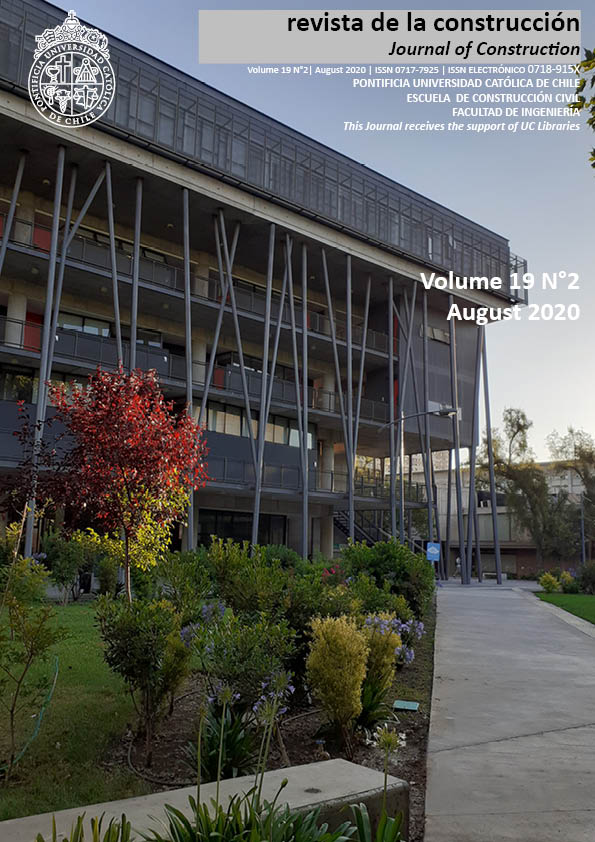Analysis of the fire resistance of normal wooden doors exposed to fire conditions
DOI:
https://doi.org/10.7764/rdlc.19.2.359-369Abstract
Meeting passive and active protection requirements in buildings has brought about demands for new systems, materials, equipment, and even design requirements like the access to housing units with doors that have a minimum fire-resistance rating of 30 minutes. For existing buildings, though, it is not always possible to adapt them to current government regulations, and normal low-cost doors usually do not comply with compartmentalization requirements. Therefore, this study aimed to evaluate the fire resistance of normal wooden doors and low-cost compensatory measures to increase the protection of existing building elements. The lab tests were performed on real-scale wooden door prototypes. Moreover, three protective solutions were tested while added to the doors: (a) fire-rated gypsum boards, (b) cement boards, (c) steel sheet with polyethylene terephthalate felt, in addition to the reference door. It was noted that only the prototype with cement boards managed to resist for 30 minutes. This result evidences the existence of alternative low-cost solutions that can be used in simpler buildings, although some of the usual options may not be able to meet the requirement.
Downloads
Downloads
Published
How to Cite
Issue
Section
License
Copyright (c) 2020 Bernardo Tutikian, Carina Panno, Jordana Gonçalves, Gustavo Prager, Fabrício Bolina

This work is licensed under a Creative Commons Attribution-NonCommercial-NoDerivatives 4.0 International License.





